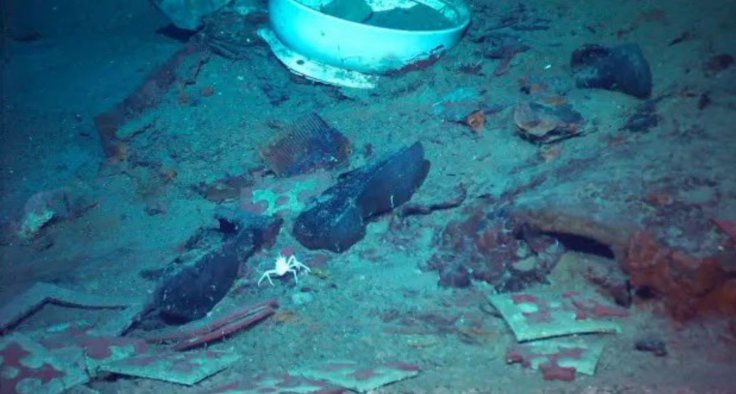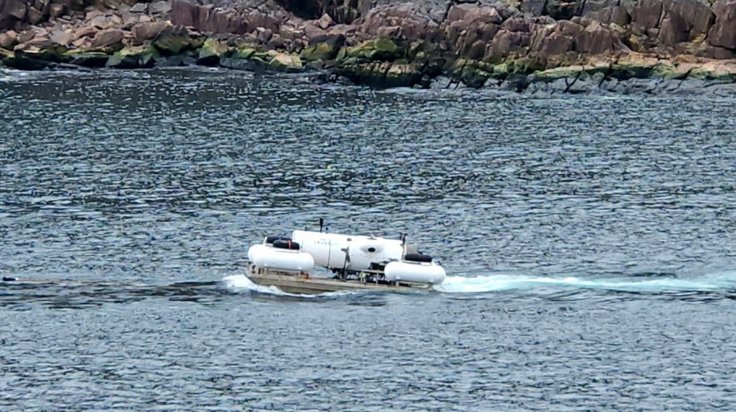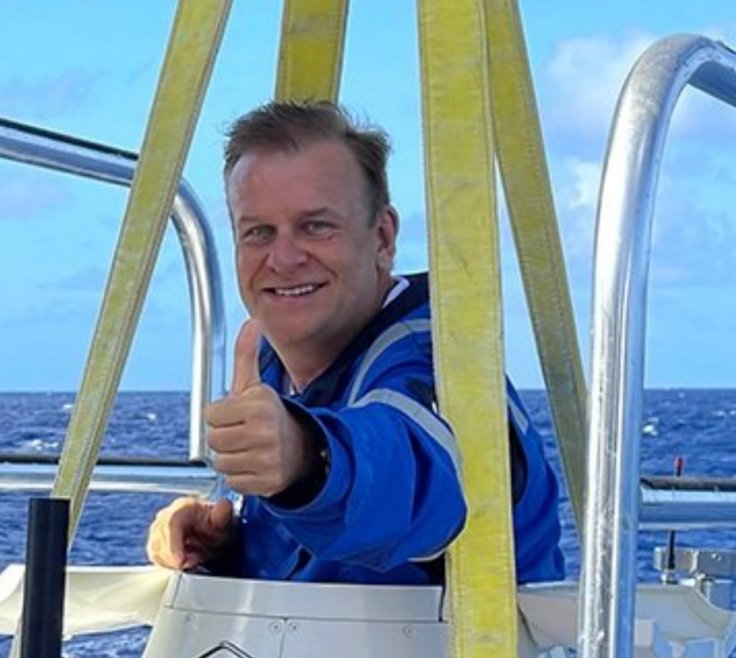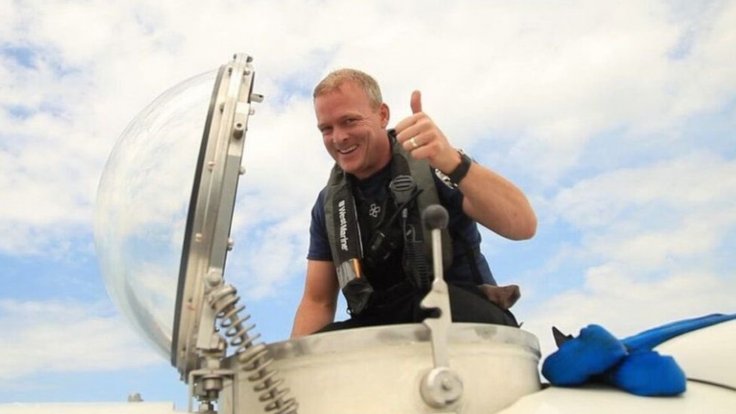The US Navy likely heard the sound of the Titanic submarine carrying five tourists imploding moments after it was reported missing, according to a report. However, even then a multi-million-dollar international rescue operation was launched hoping to find the survivors, which has now sparked questions as to what was the reason behind such a mission.
The sound of implosion was reportedly detected by the US Navy's sonar system. The Navy has maintained an acoustic detection system along its coast to promptly identify enemy submarines since the 1950s. Contact with the Titan submarine was lost at 9:45 am on Sunday, approximately one hour and 45 minutes after it began its descent.
The Sound of Silence

The fanatic search for the five people on the submarine drew to a devastating close after a Canadian ship found debris from the vessel on the ocean floor.
According to search and rescue authorities, it is believed that the five passengers likely died on Sunday, prior to the detection of potential distress signals in the water by military planes equipped with sonar buoys.
However, reports claim that the sound of the 'implosion" was detected by the US Navy on Sunday itself, that too shortly after the Titanic submarine was reported missing.
"The U.S. Navy conducted an analysis of acoustic data and detected an anomaly consistent with an implosion or explosion in the general vicinity of where the Titan submersible was operating when communications were lost," a senior U.S. Navy official told The Wall Street Journal in a statement, DailyMail.com reported.
"While not definitive, this information was immediately shared with the Incident Commander to assist with the ongoing search and rescue mission."
Officials detected sounds in the same area where the sub's debris was discovered on Thursday. Shortly after the debris was located, authorities concluded that the five individuals aboard the submersible were presumed dead after the sub suffered "catastrophic implosion."
The U.S. Navy declined to disclose the name of the confidential listening system citing national security concerns, DailyMail.com reported.
Coast Guard Rear Adm. John Mauger said earlier on Thursday that it was premature to determine whether the implosion occurred at the moment of the last communication.
According to Rear Adm. John Mauger, the implosion was not detected by the sonar buoys used by the search teams. This implies that the implosion likely occurred prior to the arrival of the search crews and was indeed detected by the U.S. Navy's listening system.

"We had listening devices in the water throughout and did not hear any signs of catastrophic failure from those," said Mauger.
"The implosion would have generated a significant, broadband sound that the sonar buoys would have picked up."

The reason for the U.S. Navy not disclosing the information about the probable implosion is unclear. Additionally, it is unclear whether they informed the families or the rescue teams about their information regarding the implosion.
New Questions Arise
One possible reason for the U.S. Navy not sharing the information about the implosion could be that they wanted a search and rescue mission, holding onto the hope that their information was incorrect. They may have wanted to avoid providing any discouragement or reason to impede the search efforts.

By Wednesday morning, there were three additional ships present at the site, along with the mothership, the Polar Prince. These included the Canadian Coast Guard boat named John Cabot, equipped with sonar capabilities, as well as two commercial vessels, the Skandi Vinland and the Atlantic Merlin.
On Wednesday, a Coast Guard C-130 crew continued the search efforts from the air.
Additionally, the Coast Guard announced that five more vessels were en route to the search area -- the Canadian CGS Ann Harvey, Canadian CGS Terry Fox, Motor Vessel Horizon Arctic, French Research Vessel L'Atalante, and Canadian Ship Glace Bay, which carried a mobile decompression chamber and medical personnel.

Moreover, a remotely operated vehicle (ROV) from the British deep-sea company Magellan was scheduled to join the operation. While the fleet hurried towards the search zone, the U.S. Navy was aware that the likelihood of the five passengers being killed instantly around 9:45 am on Sunday was high.
The five tourists who lost their lives in the incident include Stockton Rush, the CEO of OceanGate; Paul-Henri (PH) Nargeolet, a former French Navy veteran; Hamish Harding, a British billionaire; Shahzada Dawood, a Pakistani businessman; and his 19-year-old son, Suleman.
The men, some of whom had paid $250,000 each to see the renowned shipwreck, likely died instantly.
In a devastating blow to their families, experts have determined that there is little hope of recovering any of the victims' remains.

"This is an incredibly unforgiving environment down there. The debris is consistent of a catastrophic implosion of the vessel.. we'll continue to work and search the area down there - but I don't have an answer for prospects at this time," Paul Hankin, a deep sea expert involved in the search, said.
"We offer our most heartfelt condolences for the loved ones of the crew," Coast Guard Capt. Jamie Frederick said Thursday.
The US First Coast Guard District officially announced on Thursday afternoon that debris from the Titan submarine, including its nosecone and the front end bell of the pressure hull, was discovered by a Remotely Operated Vehicle (ROV), an unmanned underwater probe.
"A debris field was discovered within the search area by an ROV near the Titanic," Rear Admiral John Mauger said, adding a "Smaller debris field within the debris field," had been found by Odysseus 6K, an ROV made by Mass. based Pelagic Research Services, which had been launched from the Canadian ship Horizon Arctic.
The Coast Guard also stated that the recovered debris, along with associated information, is currently undergoing evaluation and assessment.
OceanGate informed the Coast Guard that the Titan submarine had a limited oxygen supply of 96 hours when it submerged near the coast of Newfoundland, initiating a race against time to locate the vessel and its five occupants.

The passengers were sealed inside the submersible with 17 bolts securing the hatch from the outside. Initial speculation suggested that the submersible might be trapped within the Titanic wreckage, but still intact at a depth of 12,500 feet, with oxygen running out.
The US and Canadian Coast Guards worked together to conduct the fanatic search, and numerous other countries also sent hundreds of ships to the area to help in the search.
This was one of the main issues with the rescue efforts was the depth since no successful rescue has ever been made deeper than 1,750 feet below the surface.









